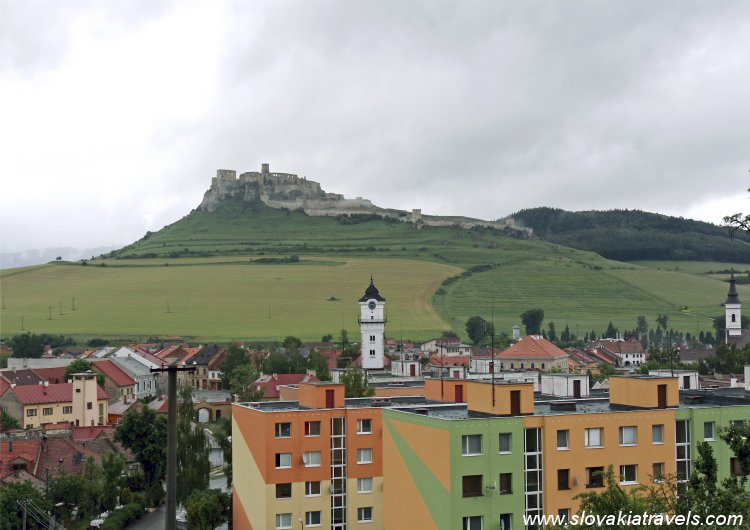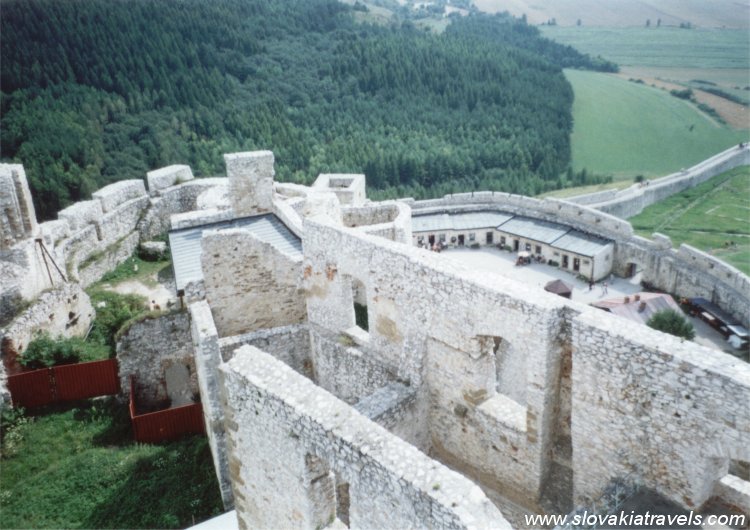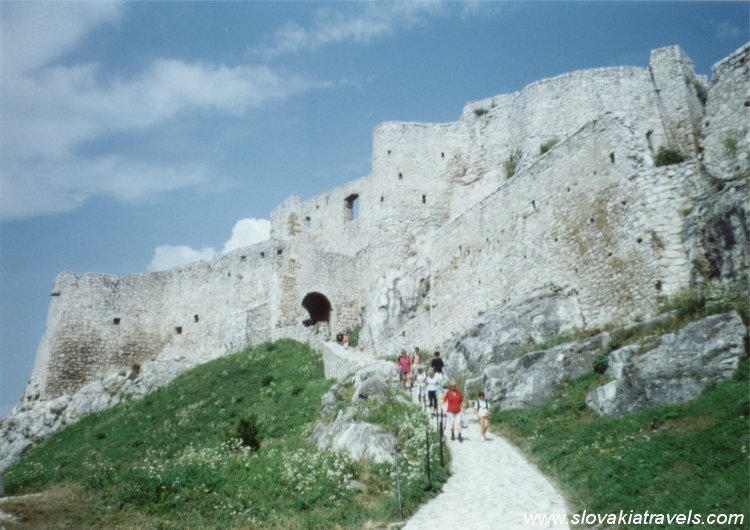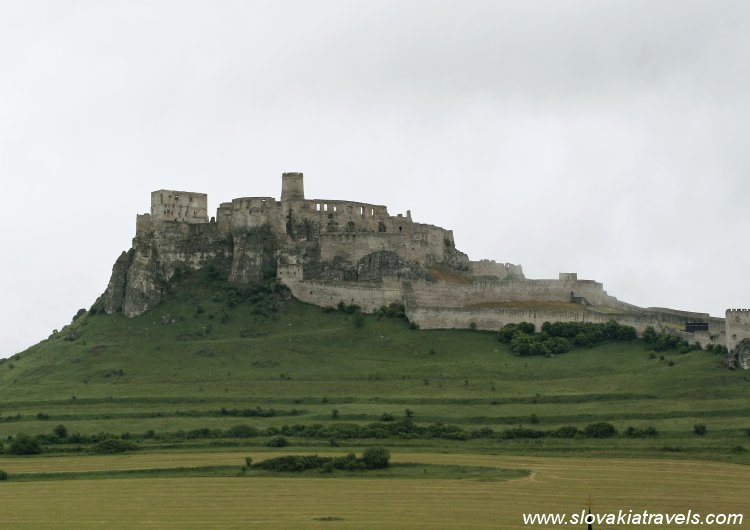 It is one of the largest medieval castle in the Central Europe. It had been mentioned by the 12th century as a regional castle. The main body of the castle was surrounded by a stone fortification in the first half of the 13th century. This enabled the castle to resist the raids of the Tatars in 1241.
It is one of the largest medieval castle in the Central Europe. It had been mentioned by the 12th century as a regional castle. The main body of the castle was surrounded by a stone fortification in the first half of the 13th century. This enabled the castle to resist the raids of the Tatars in 1241.
In the same century the fortifications was mainly strengthened by the Italian stonecutters who worked to the construction of the Spisska Kapitula. Of the 13th century it is a Romanesque palace, the gothic dwelling tower and a now non-existent Romanesque chapel.
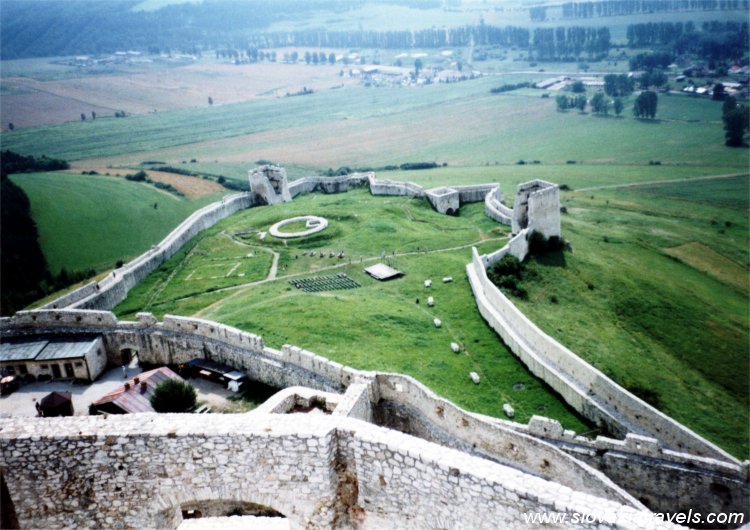 These monuments are situateted in the higher courtyard. During the reign of Ludovit (the son of Charles Robert of Anjou) the castle was extended by the addition of the central coutryard with an entry gate and barbican in the 14th century. In the half of the 15th century the lower courtyard was built Its construction is cenected with the army of Ján Jiskra of Brandýs, that it was called after the dead of the king Zigmund (in 1437) in order to protect the new Hungarian king still underage Ladislav Pohrobok (1445-1457).
These monuments are situateted in the higher courtyard. During the reign of Ludovit (the son of Charles Robert of Anjou) the castle was extended by the addition of the central coutryard with an entry gate and barbican in the 14th century. In the half of the 15th century the lower courtyard was built Its construction is cenected with the army of Ján Jiskra of Brandýs, that it was called after the dead of the king Zigmund (in 1437) in order to protect the new Hungarian king still underage Ladislav Pohrobok (1445-1457).
The Spis castle is belonged to many owners. In 1464 it was property of the Zapolsky family, in the first part of the 16th century of the Thurzo family and the last proprietor after 1636 was the Csaky family until 1945.
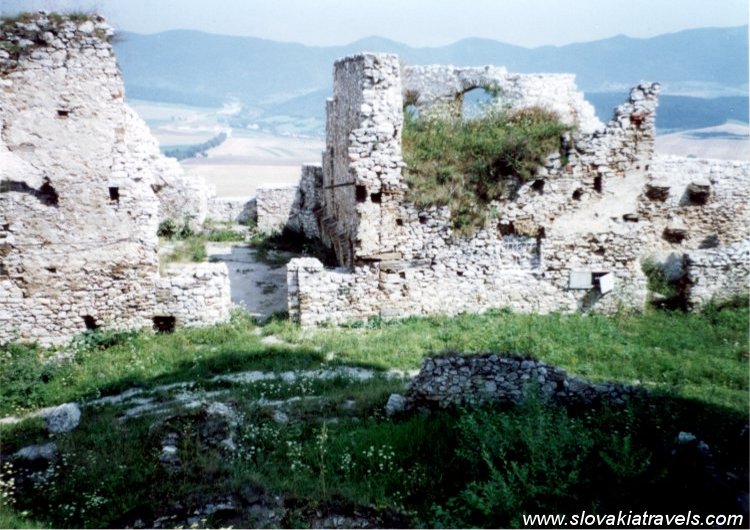 During a fire in 1780 the castle suffered extensive damage and was not reconstructed afterwards. From 1970 in the castle imposing jobs of restoration are carried out. In the restored part of the castle is situated the exposure of the history of the Spis castle and in the underground prison the torture instruments.
During a fire in 1780 the castle suffered extensive damage and was not reconstructed afterwards. From 1970 in the castle imposing jobs of restoration are carried out. In the restored part of the castle is situated the exposure of the history of the Spis castle and in the underground prison the torture instruments.
In 1993 the Spis castle together with the surroundings (Spisske Podhradie, Spisska Kapitula, the church in Zehra) was enlisted into UNESCO World Heritage List.
Open:
May-September, Mo/Su: 9.00.30-18.00
April, October, Mo/Su: 9.30-16.00




